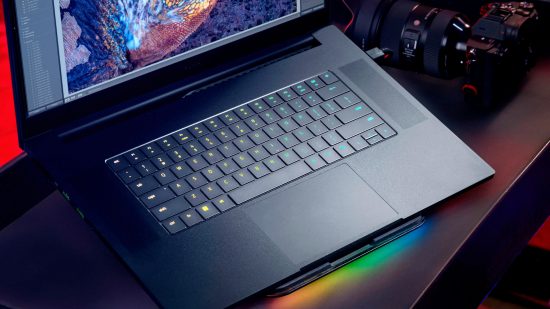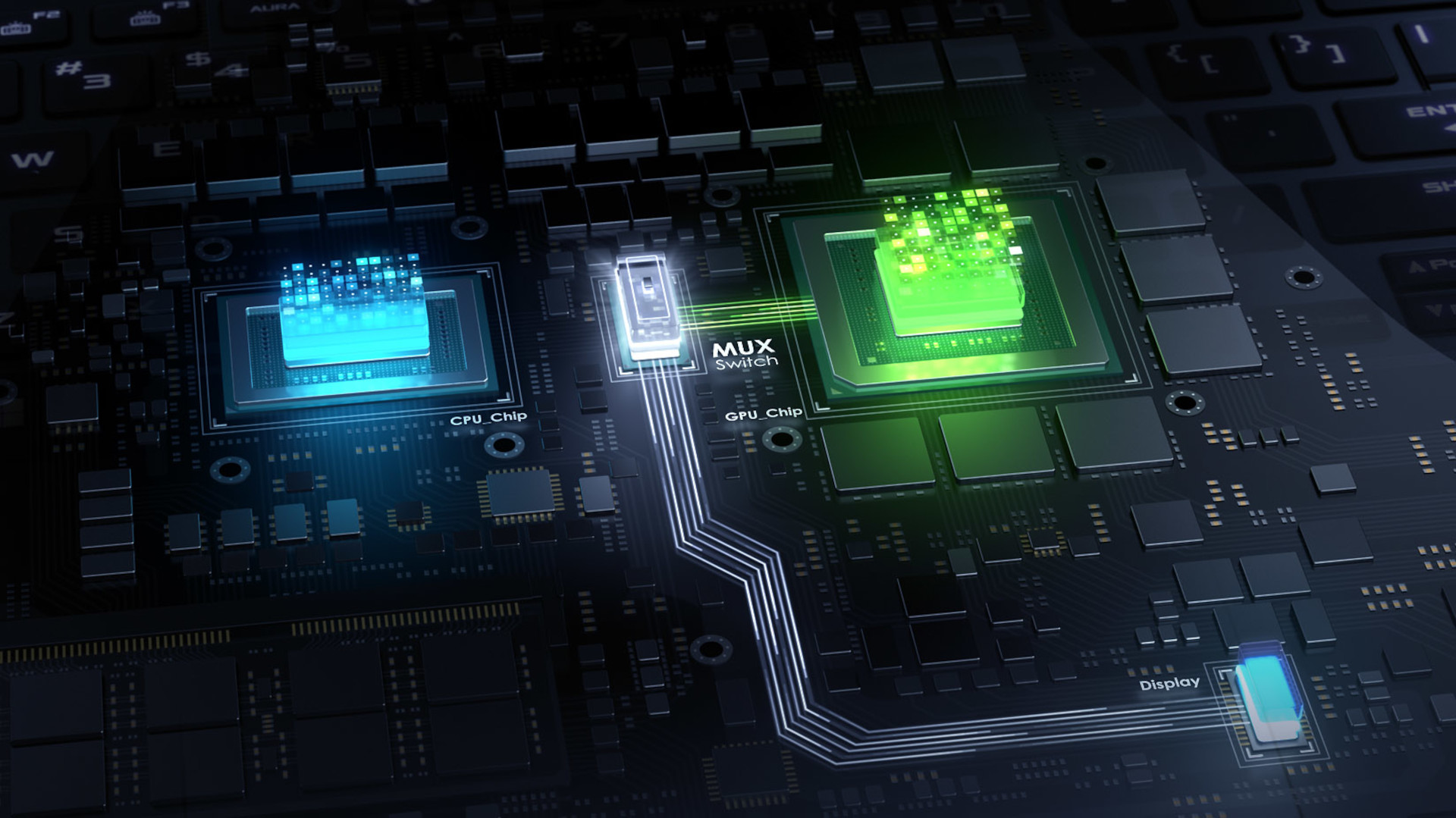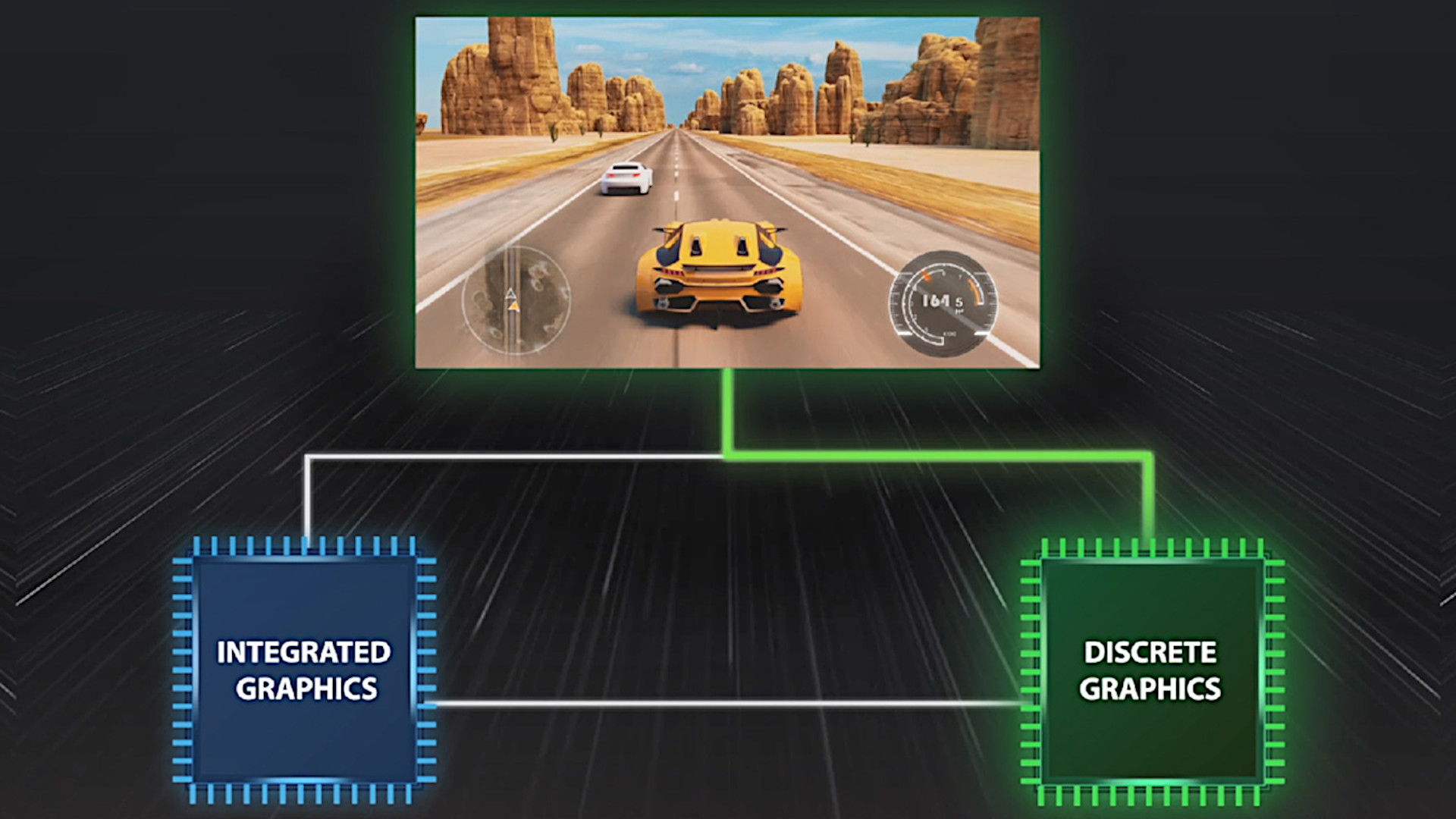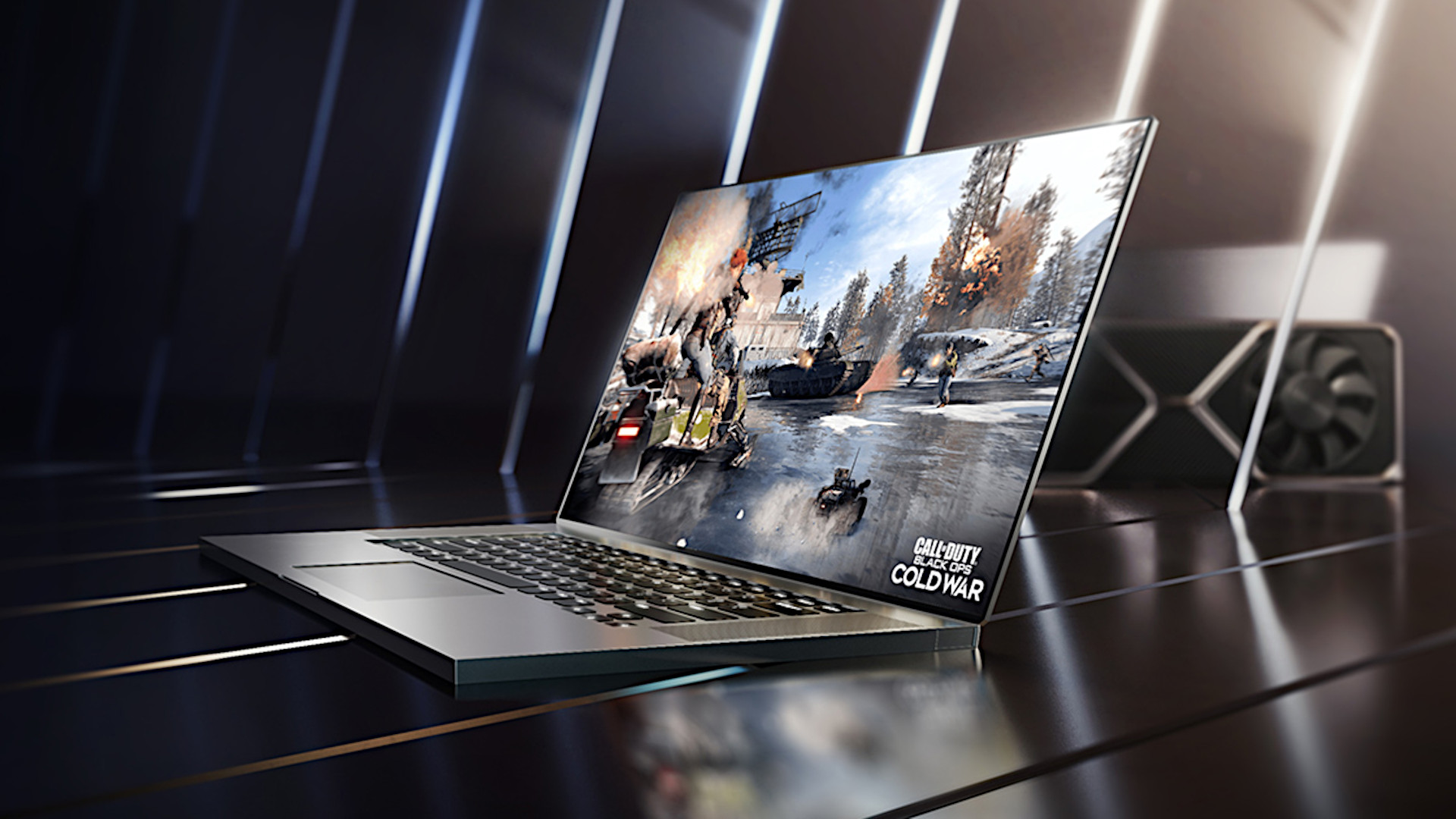If you’ve ever looked at the best gaming laptop and wondered what on earth a MUX switch is, you’re not alone. It’s actually one of the most important components you’ll find in modern machines, and opting for a model without one could leave you scratching your head when the level of performance from your new system is significantly lower than you expected.
If you’re not sure what a MUX switch is for and whether you should buy a gaming laptop with one, or if yours has one already, we’re here to help you better understand this important bit of hardware.
What is a MUX switch for?
A MUX switch, or multiplexer, is an internal component found on the motherboard of some gaming laptops that allows you to disable the CPU’s integrated GPU (iGPU) in favour of the system’s more-powerful dedicated graphics (dGPU).
Normally, all information rendered on a laptop’s dGPU passes through its iGPU before making it to the built-in screen, which helps prolong battery life as the system can toggle between the two graphics chips as needed. However, this approach has a negative impact on performance and latency.
This is where the MUX switch comes in. When enabled, it changes the physical connection between the laptop’s display and dGPU, allowing them to communicate directly with one another without any involvement from the iGPU. Now, the system can make full use of its graphical capabilities, resulting in higher frame rates in games and an improved experience in many applications.
Battery life does take a hit when enabling a MUX switch since a dGPU consumes more power than an iGPU, but you’ll want to play plugged into the wall to get the most performance out of your gaming laptop anyway.
Is a MUX switch important?
While finding a gaming laptop with a MUX switch isn’t quite as important as locating one with the best specs for your needs, it should still be high on your list of priorities. There’s little point spending more cash on a model with the best graphics card on the market if you won’t be able to use the GPU to its full potential.
In fact, some of the most expensive gaming laptops can’t boost fps quite as high as their similarly specced competition, owing to the fact that they simply lack a MUX switch. According to Asus ROG, this can cause average performance differences of 9%, with some games like Rainbow Six: Siege seeing frame rates jump by as much as 30%.
It’s also worth noting that a MUX switch opens up the ability to use technologies like Nvidia G-Sync and Nvidia Reflex, which both require direct connections between the GeForce GPU and display.
Should you find yourself with a laptop without a MUX switch, you may still be able to circumvent any potential GPU bottlenecks by connecting it to an external gaming monitor. This is, of course, providing that your system’s display inputs connect directly to the discrete graphics card rather than the integrated solution on the CPU.
How do I know if my laptop has a MUX switch?
Unfortunately, there isn’t a one size fits all solution to find out if your laptop has a MUX switch, but the best place to start is in the system’s gaming software, as you should familiarise yourself with it anyway. It’s impossible to definitively say what you should be looking for, as the description of the toggle will vary across models and manufacturers (if there’s one at all).
General rule of thumb is to look for any ‘graphic switch’ or ‘GPU mode’ options. However, you may also find the MUX Switch toggle listed under ‘hybrid mode’ or ‘Optimus’ (which you’ll want to turn off for the highest level of performance possible).
Depending on your laptop’s graphics card, you may be able to identify whether it has an automatic MUX switch of sorts by whether it supports AMD Smart Access Graphics Technology or Nvidia Advanced Optimus. You can usually find this out by visiting the model’s product page.
Failing that, if you feel comfortable navigating your laptop’s BIOS you might find your laptop’s MUX switch controls there, as is the case in some Alienware and Dell gaming laptops.
Can you install a MUX switch?
No, you cannot install a MUX switch. Manufacturers have to decide whether to include one when designing their gaming laptops, after which they’re either omitted or soldered on to the system’s motherboard.
There’s no way to mimic one via software, either, so proceed with caution when purchasing gaming laptops that don’t explicitly state whether they have a MUX switch or not.




